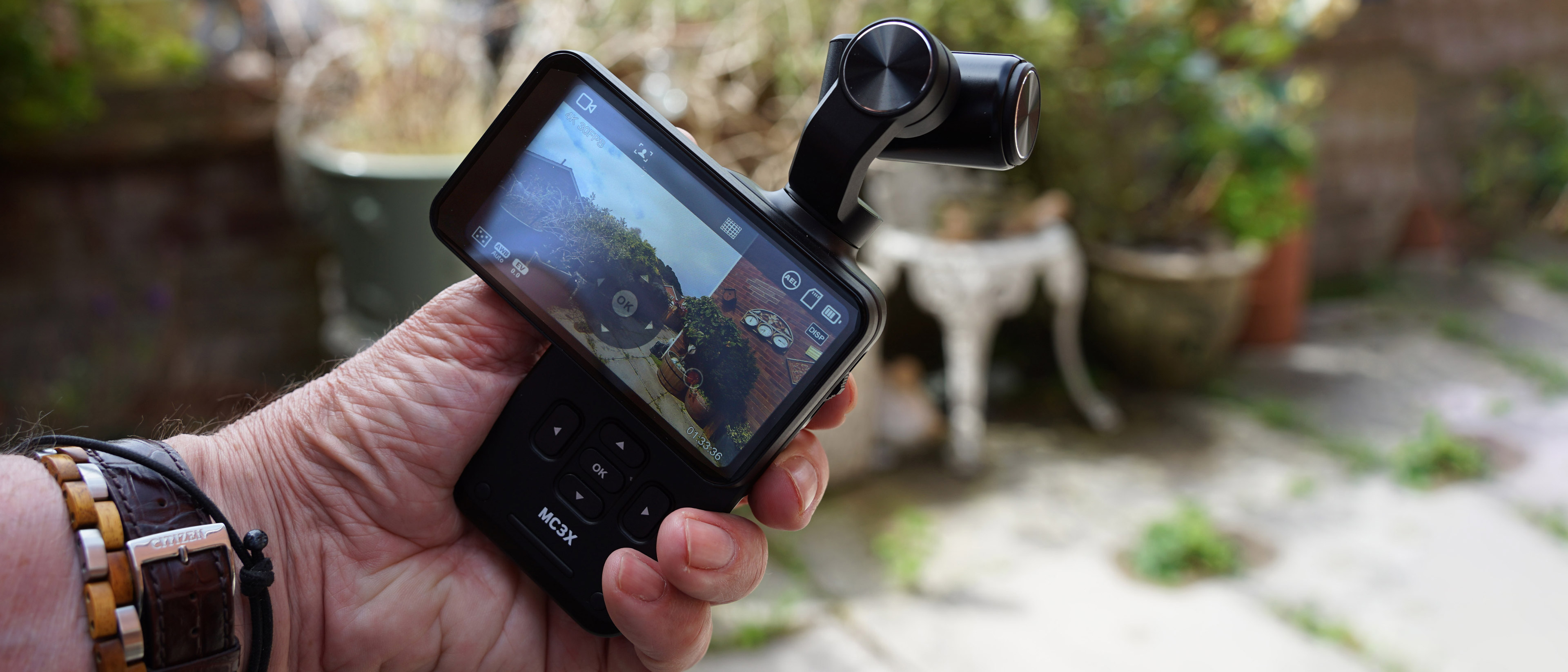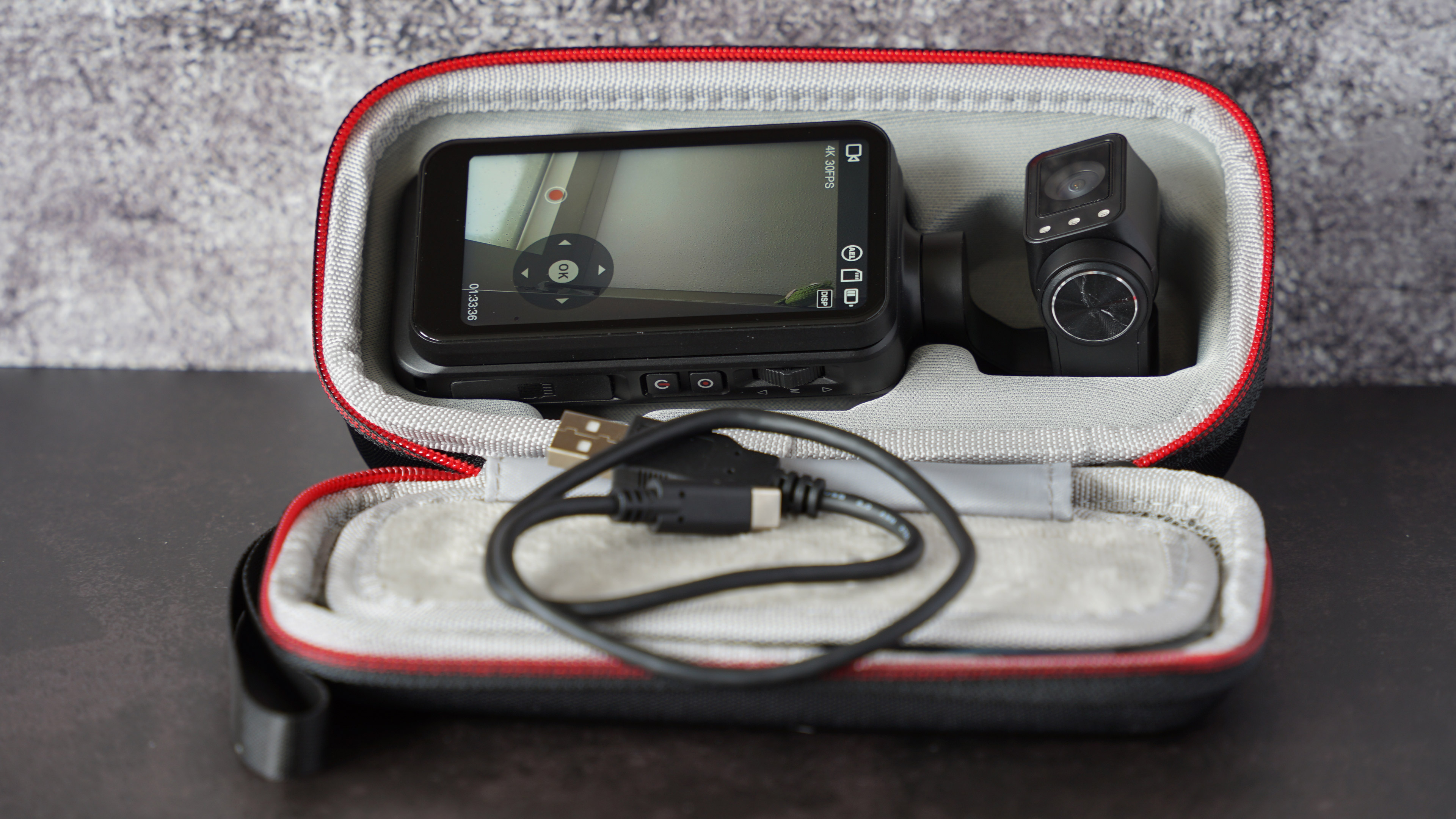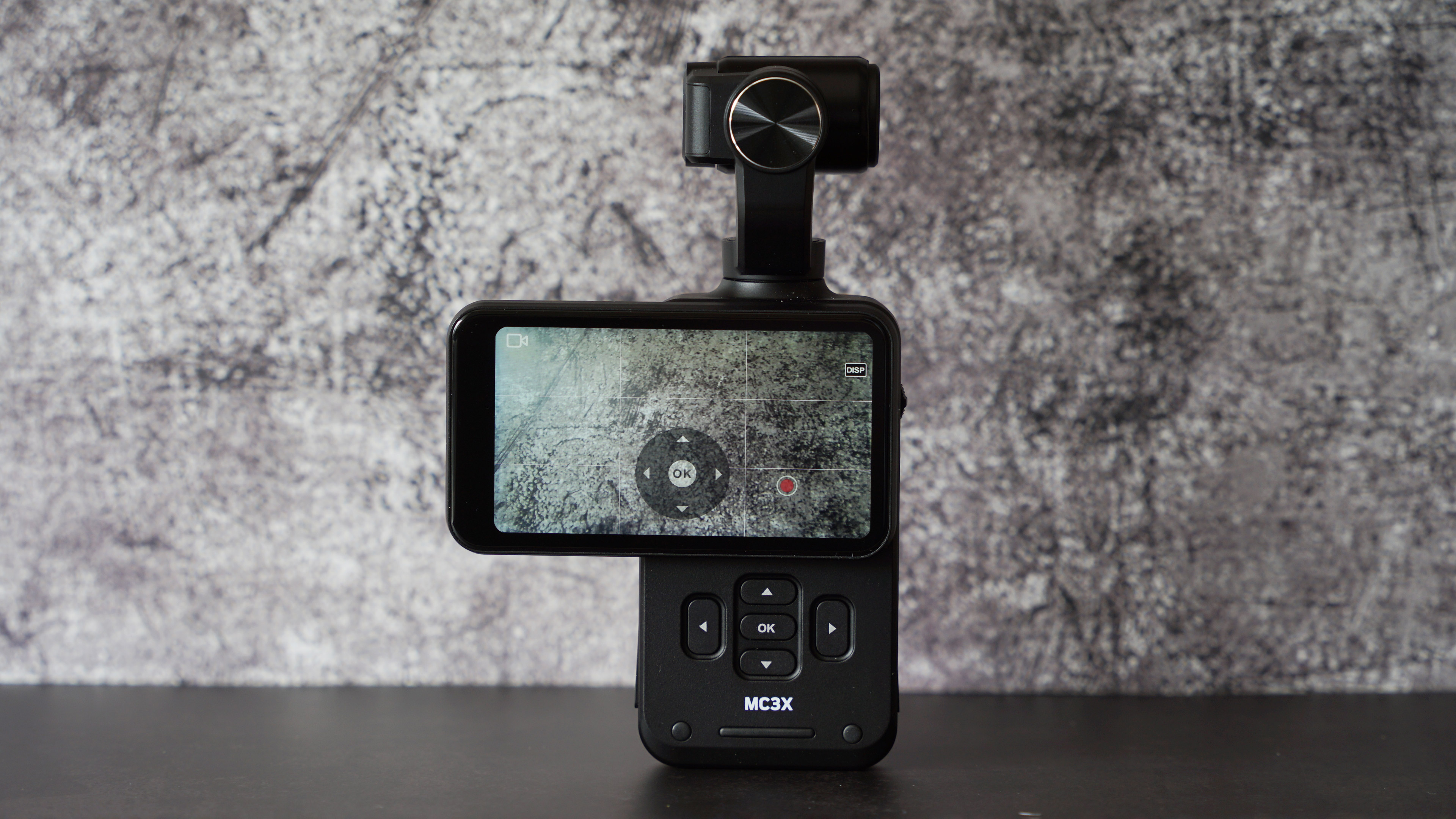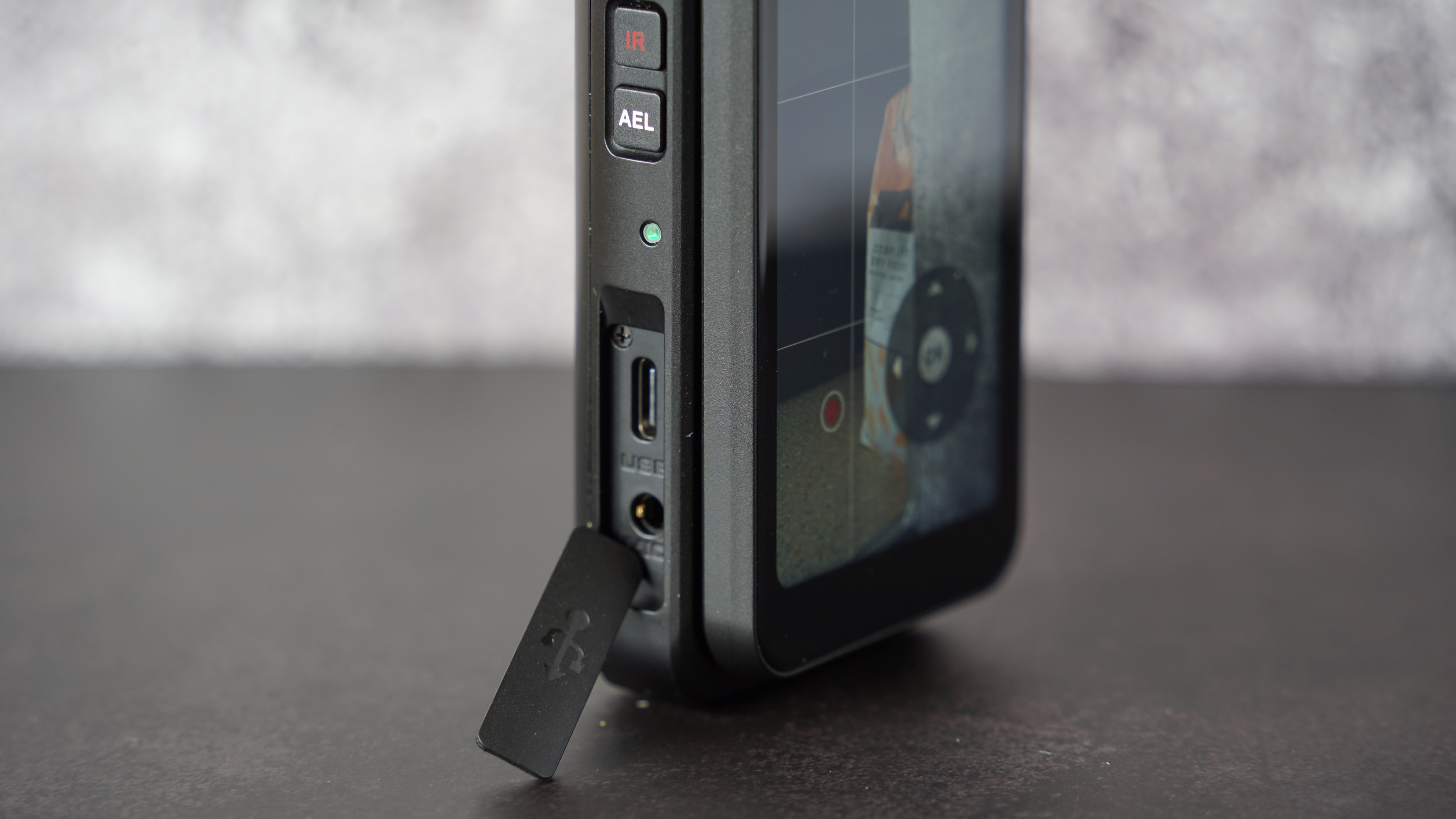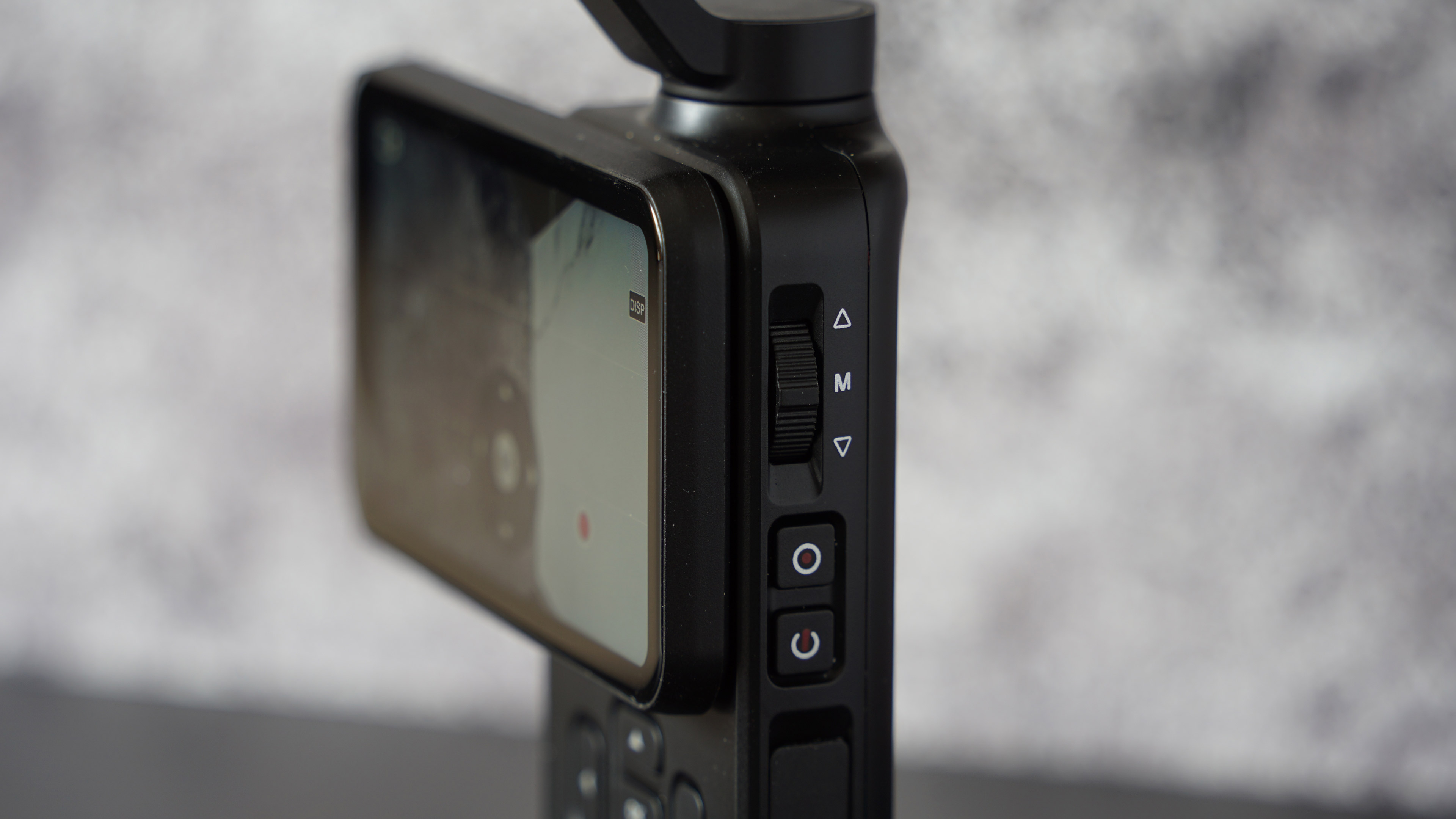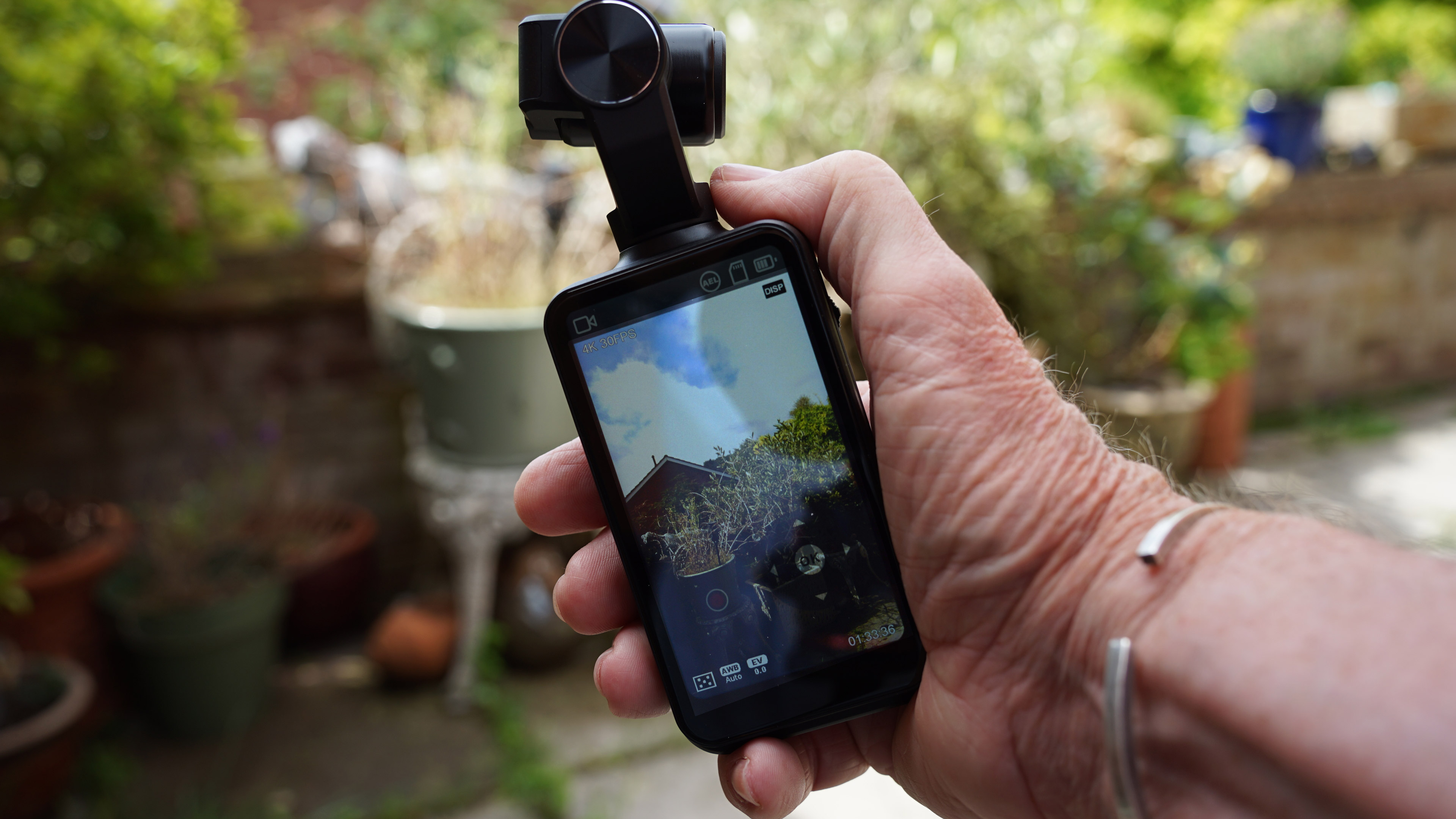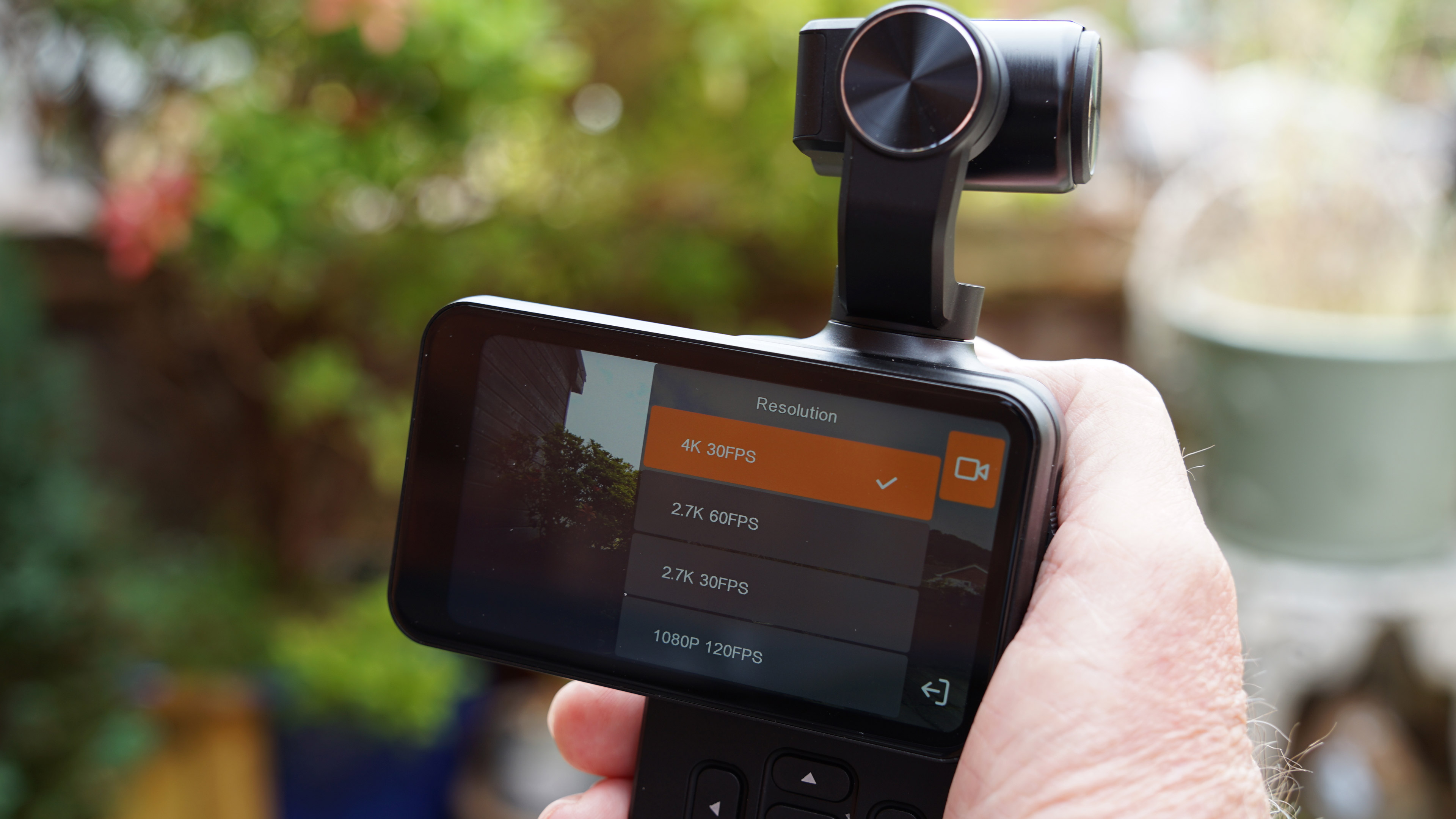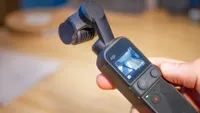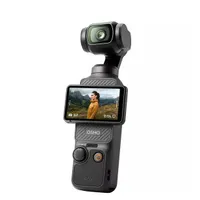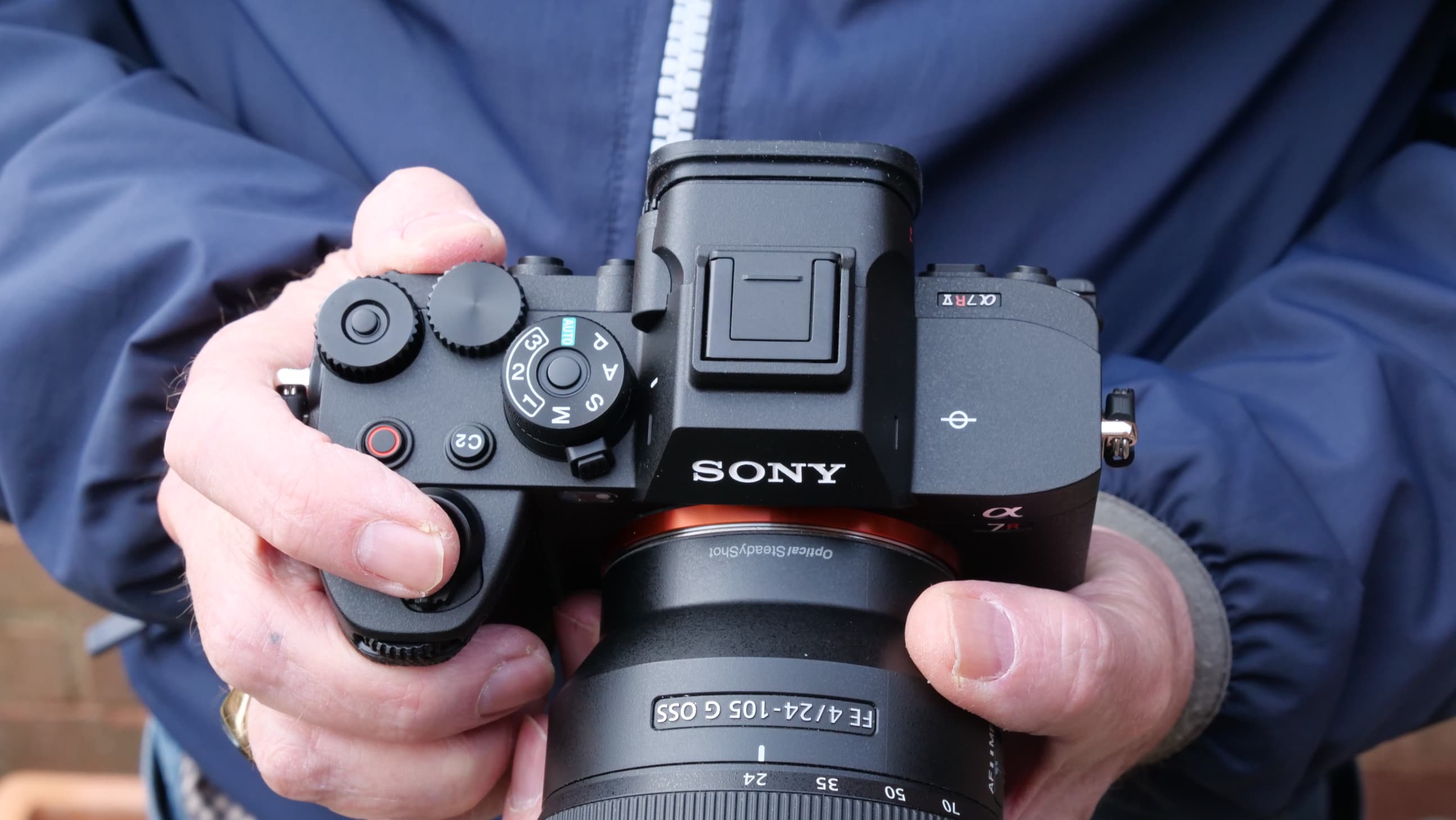Digital Camera World Verdict
The AgfaPhoto Realimove MC3X is a relatively affordable gimbal camera that’s ideal for beginners because it has a big rotating screen, simple controls and few fancy gadgets. It also doesn’t rely on a separate app to get the most out of it. On the downside, it has a small sensor, weak face tracking and is a little oversized to carry safely in a pocket. It can’t match the DJI Pocket cameras for video features or frame rates, either. The Realimove MC3X is a decent basic gimbal camera, but given its compromises it would be more compelling if it was just a little cheaper.
Pros
- +
Big 3.5-inch screen
- +
No need to fire up a smartphone app
- +
Simple to understand
Cons
- -
Weak tracking
- -
Small sensor limits quality
- -
Maximum 30fps for 4K
Why you can trust Digital Camera World
DJI practically invented the concept of the gimbal camera, with its weirdly clever Pocket series. Most vloggers will be familiar with the idea of a camera grips and gimbals that you attach to a regular camera, but DJI designed a combined grip and tiny gimbal camera mounted on the top in a drastically simpler, smaller and lighter alternative to regular camera setup.
Other makers have taken note. Gimbal maker Feiyu markets its own gimbal cameras to rival DJI’s and now Agfaphoto has joined in with Realimove MC3X. It’s a lot cheaper than the latest DJI Osmo Pocket 3 and sports a huge 3.5-inch screen to make filming yourself arm’s length or at a distance much easier.
I owned a DJI Pocket 2 for some time and loved the smooth camera moves and tracking capabilities of this type of camera, but the screen was tiny – so the Realimove MC3X already has a lot of appeal for me.
Agfaphoto Realimove MC3X specifications
| Sensor: | 8MP 1/1.25-in |
| Gimbal: | 3-axis |
| Screen: | 3.5-inch rotating |
| Video: | 4K 30p, 2.7K 60p, 1080p 120p |
| Stills: | 20MP (8MP native) |
| Lens: | 3.0mm f/2.2, FOV 120° |
| Focus: | 0.3m-infinity |
| Storage: | MicroSD |
| Interface: | USB 2.0, HDMI, Mic, WiFi |
| Battery life: | 170min, charge time 2.5hr |
Agfaphoto Realimove MC3X price and availability
The Agfaphoto Realimove MC3X is being sold for £299 in the UK, with US availability and pricing yet to be confirmed. This makes it considerably cheaper than the DJI Pocket 3, but a little more expensive than the old Pocket 2, which has a smaller screen but a larger sensor and more advanced options.
The price of the Agfaphoto is reasonable given its simple operation and big screen, but the small 1/2.5-inch sensor limits the video quality, especially in low light, so it’s not an outright win.
Agfaphoto Realimove MC3X build and handling
The Realimove MC3X has quite a wide body in order to accommodate its big screen. I don’t mind that at all, since I found my old Pocket 2 was a bit on the small side. By default the Realimove films vertically, but if you twist the screen sideways you’re straight into horizontal filming mode, and this also reveals physical directional buttons so you’re not reliant on the touchscreen to adjust the gimbal direction.
There is a companion OD Cam mobile app but I gave that a miss because it didn’t seem to offer much beyond controls that are already quite easy to access on the gimbal. That’s the advantage of the big display and I found it quite refreshing after my Pocket 2. If you dig around in the menus a little you’ll see you do get a choice between the regular pan follow, pan and tilt follow, all locked and all following gimbal modes. You can also make some basic adjustments to exposure compensation, white balance and metering modes.
The best camera deals, reviews, product advice, and unmissable photography news, direct to your inbox!
The build quality and physical controls don’t feel quite up to DJI standards, but the buttons are big and clearly labelled and it doesn’t take long to remember what they all do. What I especially like is that you’re not constantly switching between the gimbal and a mobile app – the Realimove MC3X works perfectly in isolation as a standalone camera. I also like the tripod socket built into the base. You don’t get a mini-tripod in the kit, but they’re cheap to buy separately, or you could attach a selfie stick for a longer reach.
Will it go in a pocket, though? Yes, kind of, but only in a larger trouser or jacket pocket really, and the issue here is that the Realimove MC3X doesn’t park and lock its gimbal mechanism when it’s powered down, so that does make it feel quite vulnerable. There is a hard carry case, but it accommodates cables too and it’s pretty big, so while it does protect the Realimove MC3X properly, it makes it a lot less pocketable..
Agfaphoto Realimove MC3X performance
The on-screen footage looks very smooth while you’re filming, but while the Realimove MC3X does have face tracking, I found it a bit sketchy and would only recognise and track faces reliably (sort of) when they are quite close to the camera – which is a pretty small distance window given that the minimum focus distance is 30cm.
The video quality is very decent, and in good light the smaller sensor isn’t really obvious. Even in dim lighting and near-darkness, the quality holds up well. If you wanted to use this kind of footage professionally you would be better off with the DJI Pocket 3 and its 1-inch sensor, but for amateur use the Realimove does a decent job. The auto white balance did seem a bit variable, though, often changing the colors as I moved from bright sunlight to trees in shade.
The stabilization is good too – probably not as rock-steady as DJI’s, but better than a smartphone and with the smoothed-out movements you only get from a gimbal. The Pan Follow mode is especially effective for keeping the camera level and the horizon centered even when you’re moving around and changing your viewpoint.
I did have some trouble with the Timelapse mode. I did get it to work once (see the sample video) but on my other dozen or so attempts tapping the on-screen Record button or the physical Record button on the side simply shut the camera down.
Agfaphoto Realimove MC3X verdict
There’s a lot to like about the Afgaphoto Realimove MC3X, in particular its big 3.5-inch screen, its easy-to-understand options and the fact it doesn’t rely on an app. You can just pick it up and start filming. The quality of the footage is good (though DJI’s is better) and the stabilization and gimbal modes are good too. You don’t get any fancy filming tricks, but do you need them?
It does seem just a little expensive, though, for a basic gimbal camera. It’s not as practical as it could be, either, because although it will fit into a pocket, this leaves the gimbal floating free and unprotected, and if you use the supplied padded hard case, it’s probably not going to go in a pocket at all, except maybe a larger coat pocket.
I did like the Agfaphoto’s fuss-free simplicity, which I think is ideal for beginners. It also does what a smartphone can’t, spinning round its camera so that you can film yourself. But I think I’d still recommend a Pocket 2 for new users, for its size, frame rates and video quality, or the Pocket 3 for more ambitious filmmakers.
| Features★★★☆☆ | The Afgaphoto Realimove MC3X has a pretty basic set of features, but that’s ideal for gimbal novices |
Design ★★★★☆ | The big screen is a major plus point, though it makes the Realimove less pocketable and there’s no slimline hard case |
Performance ★★★★☆ | Small sensor or not, the Realimove delivers decent image quality and stabilization at this price |
| Value★★★☆☆ | The Realimove is a lot cheaper than the DJI Pocket 3, but while it’s still available the Pocket 2 is cheaper still and, overall, much better |
Alternatives
The DJI Pocket 2 might not be available for much longer, but while it is, this is the cheaper, better buy. The tiny screen is a nuisance, but the Pocket 2 is more portable, comes with a slimline hard case for protection and offers better frame rates and video quality.
The DJI Pocket 3 is around twice the price of the Realimove but a far superior filmmaking tool, thanks in part to its huge (by comparison) 1-inch sensor. It’s also no more expensive than a cheap mirrorless camera and around half the price of a flagship smartphone.
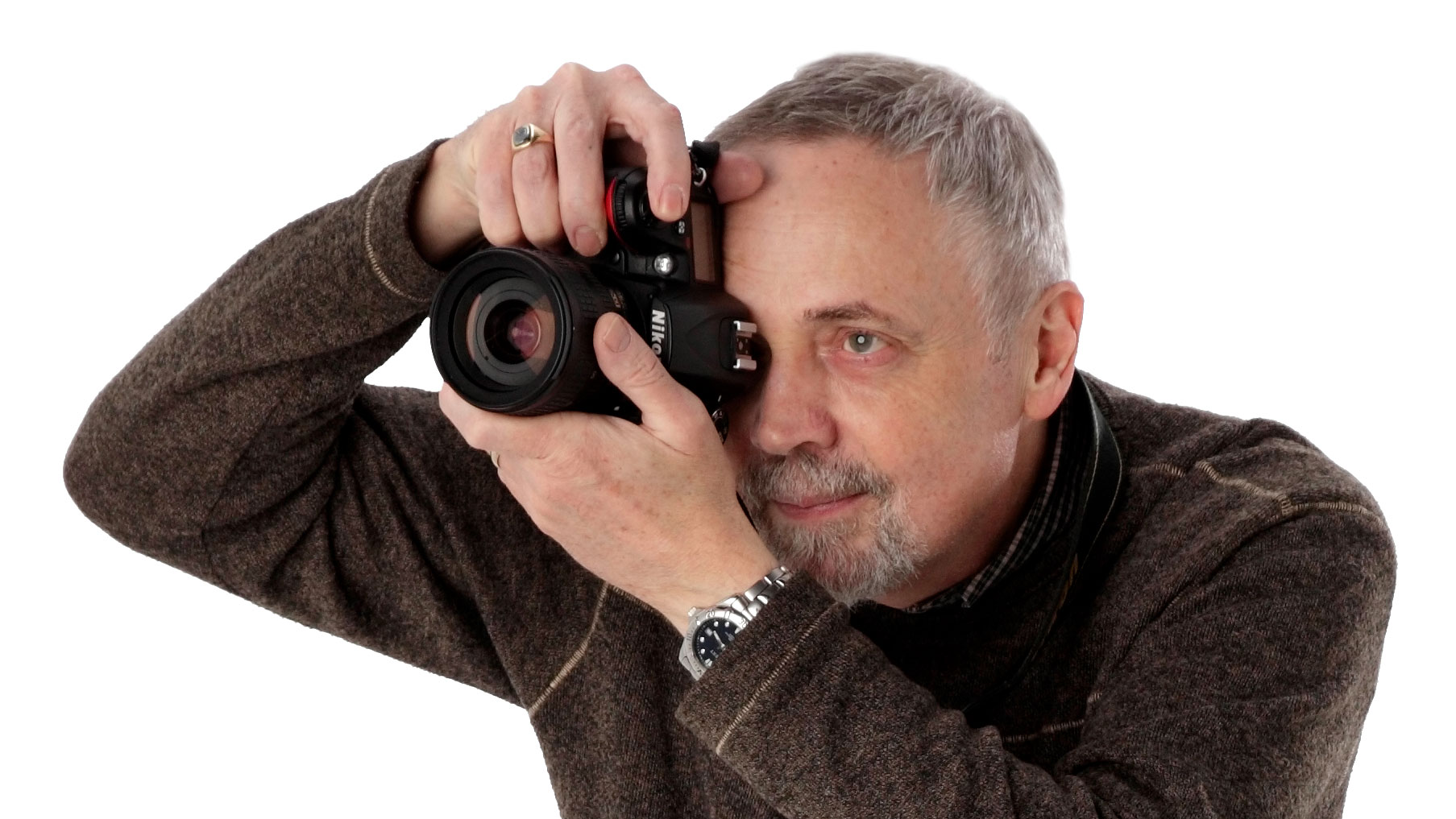
Rod is an independent photography journalist and editor, and a long-standing Digital Camera World contributor, having previously worked as DCW's Group Reviews editor. Before that he has been technique editor on N-Photo, Head of Testing for the photography division and Camera Channel editor on TechRadar, as well as contributing to many other publications. He has been writing about photography technique, photo editing and digital cameras since they first appeared, and before that began his career writing about film photography. He has used and reviewed practically every interchangeable lens camera launched in the past 20 years, from entry-level DSLRs to medium format cameras, together with lenses, tripods, gimbals, light meters, camera bags and more. Rod has his own camera gear blog at fotovolo.com but also writes about photo-editing applications and techniques at lifeafterphotoshop.com
You must confirm your public display name before commenting
Please logout and then login again, you will then be prompted to enter your display name.
